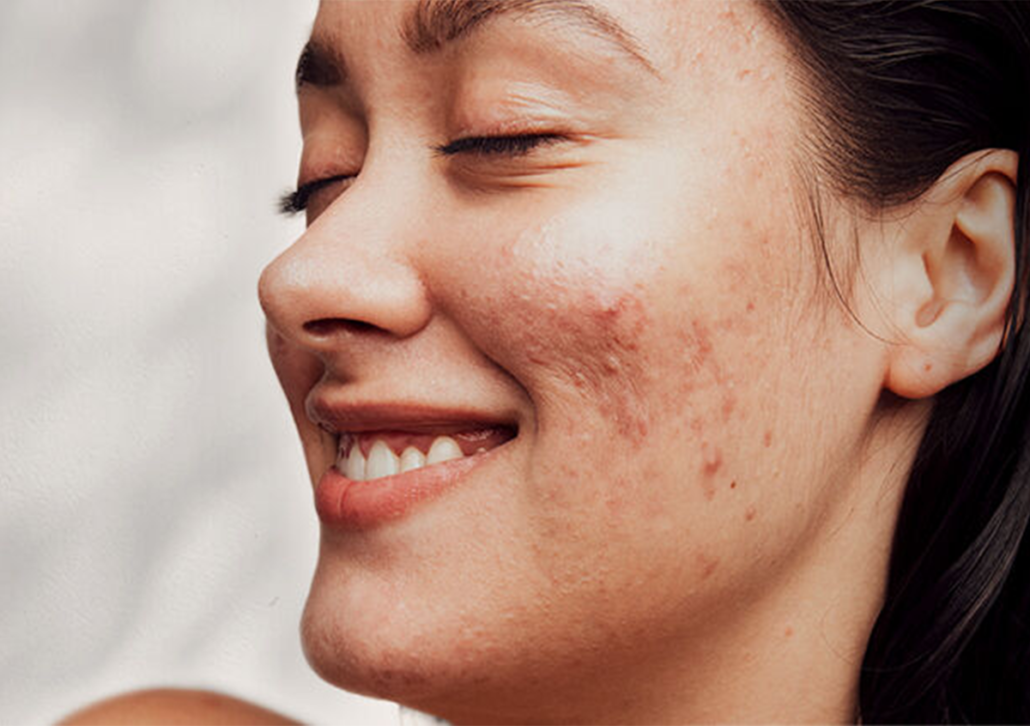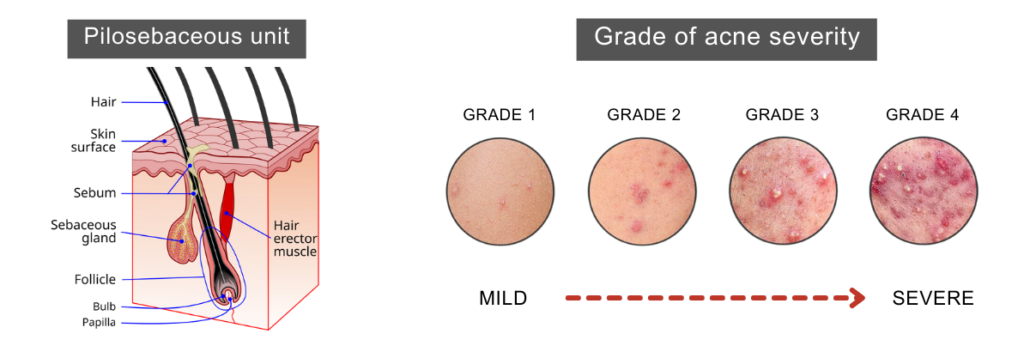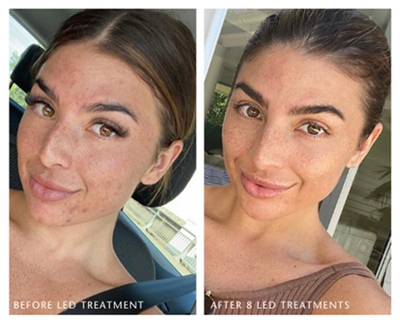
The must-know secrets of controlling acne
Did you know that around 85 per cent of Australians will develop acne at some point during their life? With approximately 5 per cent experiencing severe acne.
It’s the most common skin condition that doctors treat. Acne doesn’t discriminate when it comes to age—it can pop up at any time. However, it tends to be most prevalent during adolescence and can also affect women around the time of menopause.
If you deal with frequent breakouts or acne, there’s a good chance you’ve spent hours on the internet researching, trying to find the secret to controlling this skin condition—and you’re not alone. However, without a great understanding of the whole picture, you may have a hard time figuring out the right treatment plan for you. It’s always best to seek the advice of a skin care professional, such as our expert team of Dermal Therapists when it comes to treating your skin, as not all acne is the same.
Because this skin condition is so widespread, June is commonly known as ‘Acne Awareness Month’ and is used to bring awareness and support to those affected by acne.
Read on as our Dermal Therapists share the common causes of acne, the must-know secrets to controlling acne and their top 5 product recommendations.
1. What is acne and how is it formed?
Acne is a common skin condition that affects people of all ages, but it most commonly affects teens and young adults.
The primary cause of acne is when your pilosebaceous unit (which is made up of the hair follicle, hair shaft and sebaceous gland) gets clogged with oil (sebum), dead skin cells, and bacteria. This clog forms a plug that traps bacteria inside the pore. The trapped bacteria then cause inflammation and irritation of the skin that can lead to acne.
Acne can be mild or severe. Mild acne usually has only blackheads, whiteheads, and smaller inflamed nodules. Moderate to severe acne often has many blackheads and whiteheads on the surface of the skin as well as larger inflamed nodules under the surface of the skin that rupture into painful sores called cysts.

The main causes of acne are:
Overproduction of sebum
Sebum is an oily substance produced by sebaceous glands in our skin to keep it soft and supple. When too much sebum is produced, clogged pores form in hair follicles which leads to acne breakouts.
Hormonal changes
Hormones can play a role in causing acne, by making your body produce more sebum during puberty, and during menstrual periods when levels of estrogen rise. A hormonal imbalance, particularly an increase in androgens, which prompts the sebaceous glands to produce more oil, is the root cause of hormonal acne.
Acne can occur on several different parts of the body including the back, face, chest, shoulders, and neck; and although not considered a serious health threat, if left untreated it can cause scars, and impact self-esteem.
2. What makes acne worse?
We all know acne can affect your lifestyle, but did you know that your lifestyle might affect your acne? Although the main causes of acne are hormones and heredity, acne may be worsened by stress, diet, sports, sleep patterns, tanning and smoking.
Stress
Did you know that stress can make acne worse? When we’re stressed, our bodies produce more of a hormone called cortisol, which can make our skin oilier and trigger inflammation in the skin, leading to outbreaks of pimples and blackheads. And for women, stress can even lead to increased production of the male hormone testosterone, which can make acne more severe.
It’s not just the hormones, though. When we’re stressed, we tend to neglect our diet, sleep, and skincare routine, which can also contribute to breakouts. So, it’s important to take care of ourselves and manage stress to keep our skin happy and clear.
Diet
The connection between diet and acne is still up for debate. Some early research suggests that certain foods can have an impact, but we don’t have any hard evidence confirming a direct correlation just yet.
When it comes to acne, there are some food types that seem to be more closely linked to acne, such as dairy products, caffeine, sugar, and refined carbohydrates. These food types tend to cause inflammation in the body, which in turn can lead to more frequent breakouts. So, it’s best to be mindful of your diet and consider cutting back on these items if you’re dealing with acne and breakout issues.
Exercise and sweating
Exercise and hot, humid environments can make acne worse. When you exercise, it increases the levels of male hormones in your body. Additionally, being in a hot and humid environment, along with increased sweating, can lead to increased oil production and clogged pores. Even the friction caused by certain activities can contribute to the problem.
However, don’t let this discourage you from participating in sports or exercising altogether. The benefits of being active far outweigh the downside. Instead, take steps to help minimise the impact of sweat and oil on your skin. For example, change out of your sweaty clothing and shower as soon as possible after physical activity to help remove the sweat and oil from your skin.
Poor Sleep
If you don’t get enough restorative sleep, your body might not feel fully rested, triggering a surge of cortisol, which could potentially lead to more acne. Although not always easy, make sure you prioritise sleep to give your body the rest it requires and allow your acne to heal properly. And it should go without saying – you should always take your makeup off before bed.
Tanning and sun exposure
Here’s the deal with sun exposure and tanning. Yeah, they might make your acne blemishes look better at first, but it’s only temporary. You see, when you soak up those rays, the ultraviolet light increases the inflammation in your skin, which can make your acne worse down the line. And that’s not all! When those pesky pimples dry up, tanning can leave you with annoying brown spots because it increases the melanin pigment. Not a good look. So step out of the sun and protect your skin with a broad-spectrum SPF.
3. What can I do to control my acne?
Although hormones and a hereditary predisposition to oily skin are the most common cause of acne, there are some ways you can control and reduce acne. It’s up to you to decide how much of a lifestyle change you can make.
Here are our top 9 tips for controlling your acne:
- Keep your hands away from your face! Our hands carry on average 3,200 different germs (yuck!).
- Ensure you keep your skin clean, washing it promptly after exercise and before bed.
- On that note, make sure to wash your pillowcase regularly (we highly recommend a silk pillowcase).
- Clean your makeup brushes. And we mean weekly, not every few months.
- Limit your stress levels by practising stillness and implementing self-care into your daily routine. We swear by Insight Timer app.
- Drink plenty of water. It ensures toxins are flushed from the body and keeps the skin hydrated.
- Ensure your diet is high in essential fatty acids (EFA’s) or supplement accordingly. We recommend JS Health Fish Oil tablets.
- Find an expert Dermal Therapist. This is your secret weapon. Like mentioned, acne is not the same for everyone. Our expert skin therapists will look at your skin and lifestyle factors to tailor a treatment plan just for you.
- Get a good skincare routine and stick to it. This is where a skin therapist can help advise you on the best products for your skin type and concerns.
If you’re looking for advice on the best skincare products for acne, our Dermal Therapists can help with a one-on-one skin consultation. They can provide a thorough understanding of which ingredients will work best for your skin. But as we’re not one to gatekeep, let’s dive into our top 5 acne-fighting products that you’ll find on our shelves:






